#and then like... also the relationship of this site to civil religion. And also representations of manifest destiny.
Text
ok sorry for being a hater yesterday. I started reading some Ursula k le Guin essays and i have positive emotions again. i love her.
#sometimes I'm like I should engage Deeper with the things I read but then I'm like who likes a book report#I think about most books I read again and sometimes I don't think about them#The one I've thought about the Most Is this work book sacred ground about American battlefields lolol#Idk I think you could spend years on every single book and there's always more#I wrote this paper on Charles hirschkinds the feeling of history#And I keep thinking about it like#I took the easy option for writing the paper#And I think i was wrong to#I keep thinking back on the other question#Then again that question guided my next paper and so on and so forth#Oh my how do I miss school so badly already it's been almost exactly two months#I just don't THINK like that on my own#No matter how. Much I'm reading#Or even the stuff I write/present for work#Cuz it's all for the PUBLIX#what I really want to do at work is like. Talk about theories of the secular wrt to a battlefield defined by the NPS as sacred ground#and how that relates to the Def of sacred in like... Nagpra#and then like... also the relationship of this site to civil religion. And also representations of manifest destiny.#Etc.
2 notes
·
View notes
Text
Concepts for the Start of our Spelljamming Campaign.
As I mentioned before, my basic concept for a campaign was for the players to form a party of adventurous treasure seekers on a ship. Pirates. In a universe of thousands of cultures and worlds with no central authority(unless you as DM want to create one), it seemed natural that right and wrong would be more factionally based than any other concern.
Why? Factions are interested in many things. Sustainability and growth are chief amongst these. Even the most morally good group does not want to cease existing because they couldn't bring themselves to compete for viability with other possibly more aggressive ideologies. Would the faction of Corellon Larethian lie down and allow groups of evil to erase the importance of their art? Absolutely not. It is, and always will be, a competition. For the actors in this drama, the player characters, this is a good thing.
I spent a bit of time in the months before the release of Spelljammer: Adventures in Space looking over previous content to determine what factions might be fun to encounter and form relationships with. The best list I found was here: https://www.worldanvil.com/w/spelljammer-universe-franciscovega/a/a-list-of-factions-in-the-multiverse2Fphlogiston-article
You can see that previous story tellers in 2nd edition were busy populating the Universe with diverse action groups. Many of the previously published adventures have encounters with these groups, and I was very excited about adding several of these groups to my campaign.
I knew that my long term goal was for the party to discover an ancient civilization and many strange artifacts and locations, but I still wanted to present a real universe filled with interesting obstacles. After all, they are starting in a spaceport with very little functional knowledge of how daily life in the Spelljammer universe really works. Who can they work with, and who must they avoid? It is really a blank canvas for the DM.
If you start your Spelljammer campaign on a world such as Faerun, then the player characters likely have a distinct world view based on their associations with religions, races, and factions on that world. There may be Zhentarim or Harper agents in Waterdeep, but there is also a solid legal system that doesn't want any shenanigans on their watch. The player characters know much of what to expect. In a spaceport, most, if not all, of the factions they knew from Waterdeep have no representation or influence outside of the party itself. The spaceport doesn't have to be completely alien (though it could be), but the party will need allies to explain the setup.
You could present a group in need of help which could appeal to your player characters, but I chose instead to present a job offer. Even though they are starting at 5th level, the party does not have their own ship yet. So, they need to pay for passage or join a crew. I decided to have a ship looking for an 'away team'. In this case, the captain of the ship is a priestess of Celestian, so travel and discovery are her path. Scouting and searching dangerous planet locations, not so much. So, a tidy cut of all loot for the captain and crew, and we are off to discover.
My original thought was that the captain had acquired an old map or information leading to an ancient site on a distant planet. While she felt certain the ruins should be there, there was no telling what else would exist in that system or on that planet. Now, the ancient civilization discovery is supposed to be the long play, with ship combat encounters more to the front. So, I decided that the planet they were heading to in this distant wildspace was inhabited now by kobolds and orcs, but to spice it up, I added a group of slavers based on the planet's moon havesting humanoids from the planet for the The Fleshdealers faction, because at some point Illithids just have to play a part.
So. I had been putting together many resources on Roll20 for these encounters when Spelljammer 5e released. I don't have to tell you that the space combat rules I was expecting didn't materialize. With our first session less than a month away, I was scrambling to find a set of rules that worked for me. Hats off to the many creators who have put out the many various rulesets available on the internet. It quickly became apparent that any ship combat that made sense would represent a separate sub-game. A quick poll of my players showed they didn't mind what I decided, they would try it. They are very cool like that.
Ultimately, I devised a movement system based on mph speed ratings(from 2nd edition, I think) on a grid of 150 ft sized hexes (so ships could be in just one hex). So, the rule for boarding applied anytime two ships were in the same hex. All ranged attacks had to reach somewhere in the enemies hex to by useable from a range perspective. The ship the party was on has two range weapons, which I allowed the players to roll attacks for, though the ship's crew manned them.
For the most part, the players just wanted to get close enough to use their own attacks and board the enemy ship. They had no interest whatsoever in some sort of naval combat. The whole being on ships really did not resonate at all. They did enjoy defeating the enemy and taking their ship, even if the helm of that ship was corrupted by blood magic. Yeah, I felt the basic rules for spelljammer helms lacked any flavor at all. I decided that the kobolds had seized a slave galley and refitted the helm with their powerful blood magic totem. This meant they could sacrifice some of their slaver prisoners for a performance boost to speed for their ship, etc. The repurposed slave galley was in bad shape and the less-than-evil party couldn't bring themselves to sacrifice prisoners to power it. They destroyed it instead.
The takeaway from our first session was that I needed to rethink the 'pirate' concept. The episodic 'star trek' format of visiting alien worlds and discovering was still the base format, but the space battles will need some further thought. Of course, your group may be much more interested in tactical naval combat. There is no wrong answer. The point is to find something that everyone enjoys and do that.
5 notes
·
View notes
Text
What's in the Villain release
Toady and ThreeToe been working on the Villain release over a year now, and it might get a little hard to remember just what will be in the game after the release.
So, I thought, why not create a bullet point list that includes most confirmed features from the devlog (there may be incidental features that weren't posted, and features that make Toady go He He He, as always)? It's not the first release to get such a list, after all. As more devlogs come in, I will of course try to keep this list up to date as well.
I will not list planned features that aren't confirmed in unless there is a good chance that they do get in.
(Updates - 25/07/2019: Map changes/evil regions and powers/dice
08/01/2019: Ńecro/Demon !!FUN!!
08/08/2019: Maps mostly finalized
08/21/2019 Adventure mode intrigue tab.
09/11/2019 + 09/18/2019 Improving organization linkage
10/02/2019 Interrogations
10/16/2019 More interrogation work
10/24/2019 Artifact thieves; Fort mode plans
10/30/2019 Fortress inflitrators and temples
11/07/2019 Temple/Priest petitions, religious thoughts
11/14/2019 Infiltrators
11/21/2019 Artifact heist
11/27/2019 Guilds and guildhalls
12/05/2019 Fort mode investigations)
World-Gen
* Villanous and fancy worldgen figures can take on aliases such as 'Kashi the Secretive', 'The Urn of Phantoms', or 'Earthhells the Bewildering'.
* Villanous characters build up networks of agents through various means - extortion, bribery, flattery, etc. The intrigue skill measures their general effectiveness.
* Using these networks, villains drive various plots - corruption, kidnapping, assassinationm, stealing artifacts, coups, framing people, corrupt imprisonment, sabotage, starting wars.
* * Kidnapped figures can be ransomed, sold into slavery, murdered, tortured, or simply held. They may be able to escape though (including those targeted by night creatures).
* * Criminal organizations can branch out to other sites and muscle out or take over local organizations.
* Necromancers can build up their towers and raise zombies beyond what their towers can hold, released into the wilderness. These undead hordes roam around and corrupt their territory towards evil.
* * Necromancers also can sneak into tombs and catacombs now, rather than just battlefields, building up their forces until they are confident that they can attack villages, then towns, then perhaps the whole world.
* * Further, necromancers can raise intelligent undead lieutenants that can act as parts of their villanous network. These can have a variety of special powers - blinding enemies, raising fog, supernatural shoves, summoning. These lieutenants can also be ghosts.
* * Summoned creatures can be short-term nightmarish beasts.
* * Necromancers and vampires can entice people with their secrets/their blood, and some do follow through with those promises.
* * Mummies can arise from tombs that get robbed, with much the same powers as necromancers.
* * Certain demons can also spread evilness, blighting plants, spreading evil creatures, spawning bogeymen.
* * Certain necromancers and demons create abominable experiments or otherwise corrupted creatures.
* Law enforcement and counter-espionage can hinder plots unless corrupted. Historical figures can be punished by prison time.
* Historical figures can be tempted by opportunities to embezzle, getting bribed, profaning temples, or other corrupt behavior. They might also have gambling problems.
* Rich folks can buy and expand houses and towers, which can be inherited or resold. Villains can use these structures as hideuts or to store stolen artifacts.
* * In order to be cursed, a historical figure profaning a temple now must be a worshipper of the relevant deity.
* Against entities that require killing neutrals (goblins, necromancers), civilizations can form alliances.
* Dwarves can dig too deep, too greedily, releasing creatures of the underworld as a new goblin civ.
* To facilitate building up more linked historical figures (and thus improve network building) and more stable sites and civs (to stand against plots), worldgen relations and positions were generally improved:
* * They can now relationships as childhood friends, war buddies, business rivals.
* * Marriage and romantic attachment have been reworked - people can divorce, remarry, have multiple lovers, and have children without being married.
* * People can bond over scholarly interests, athletic competitions (where they can also become rivals).
* * * Athletic competitions now can attract participants from friendly civilizations.
* * Humans and goblins form new positions such as keeper of the seal or master of the beasts on a civ-wide level.
* * Towns can form craft guilds and have intermediate generated nobility like barons.
* * Merchants travel the map and trading companies can form trade outposts and warehouses in other civs. They can form business rivalries.
* * Towns and villages have more diverse religious infrastructure, usually in he form of statues and small shrines.
* * * Prophets and monastic faiths can arise to form religions, which can spread to reach other sites and civilizations, building temples and possibly even declare a holy site.
* * * Religions can be persecuted against by other religions, priests can agitate or soothe tensions.
* * Successful mercenaries can build up mercenary orders dedicated to religions, weapon mastery, leadership, stealth, and other aspects. They can also upgrade their equipment.
* * * Unsuccessful mercenary companies can be disbanded.
* A number of new sites exist outside of the main settlements:
* * Castles outside of cities return.
* * Bandits and mercenaries can build up forts.
* * Monastic faiths can build monasteries.
Adventure mode
* You can now create a party of characters, rather than just a single adventurer.
* * You can choose your starting equipment, including quality levels, as well as pets/mounts.
* * You can choose your starting religion depending on your home town.
* * You can choose a starting profession (unknown how limited the list is) that provides some free skill. (Most skills won't be useful in this mode still, but may help if the character retires in or moves to a fortress.)
* Your party can act autonomously or in a tactical combat system where you take turns controlling those members set to be controlled. The members being controlled can be changed any time.
* Your characters can ride horses and other mount creatures, and if possible, your party will follow suit on mounting and dismounting.
* Pets can also be led and used as pack animals, and, importantly, can be petted.
* Necromancer adventurers can raise and ride mounts.
* Bogeymen are now restricted to certain evil biomes and nightmare demons.
* Maps of the new sites and structures are ready.
* * Shrines (and presumably temples) can have dice for divination purposes. Rolling those dice can have an effect on the adventurer.
* A new intrigue tab in the adventure log shows the evidence and information you collected regarding villanous groups.
* * The intrigue tab has a graph representation of organizations as far as you know them.
* You can interrogate and otherwise interview people.
* * You can ask questions using various skills, such as intimidation, flattery, or persuasion.
* * People being questioned decide based on various factors (wanting to stay, confidence, dominance, etc) whether to answer or not.
* * A good judge of character can better determine which conversation tactics yield good results.
Fortress mode
* Most aquifers are now slow aquifers, producing water at 1/500 the speed of the current aquifers. Aquifers in old forts remain fast aquifers, but old worlds do receive slow aquifers for new embarks. The fast aquifers will specifically be noted.
* Fortress mode temples have been updated to allow for the new organized religions, and the starting dwarves as well as generated migrants can be part of those religions.
* * Based on the zone value, your temples will be classified as shrines or temples.
* * Worshippers can petition for the construction of temples and the installment of priests after reaching a certain threshold.
* * New religion-related thoughts.
* * Priests can give sermons that give good thoughts to people who agree with the contents and only mildly annoy people who don’t.
* Craftspeople guilds can form for common professions in your fortress, and they can petition for guild halls.
* * Guild halls can host skill demonstrations for their associated skill(s), which teach the skill and meet needs.
* Villains can hire thiefs to steal your artifacts.
* Villainous infiltrators can join your fortress, assuming appropriate identities.
* * Infiltrators can attempt to sway loyalties much as in world gen.
* * Failed attempts at swaying can generate witness reports.
* Infiltrators can initiate artifact heists with the help of compromised dwarves.
* Dwarves will report when artifacts are missing/not where they are supposed to be, as well as who was last seen admiting the artifact. If the theft/handoff are seen, those also will be reported.
* The player can order interrogations, which may provide new information.
Other changes
* Legends mode displays the various romantic attachments a person has or had, as well as the various battles they participated in.
* The XML export includes the new events that can happen in world gen.
* Evil regions created through necromancy or demons slowly revert if there is no evil activity.
Modding
* Presumably there are new responsibility tokens for the new random positions.
* The DEMON and DEMON_UNIQUE tokens that were part of generated creatures, but not usable outside those, should now be available for modded creature. This may extend to FEATURE_BEAST (forgotten beasts) and TITAN.
* New interaction powers like summoning should be available.
31 notes
·
View notes
Text
Annotated Bibliography
1) Cartoon Network. “Reunited with Rebecca Sugar and Ian Jones-Quartey (Vol.3/Ep.5).” The Steven Universe Podcast, Cartoon Network, 20 Sept. 2018.
The podcast discusses an episode of Steven Universe named “Reunited”. In the episode, there is a very important scene where two characters, Ruby and Sapphire, get married. Ruby and Sapphire both use female pronouns. The network had issues with this, and Rebecca discusses the fight she had while trying to get this episode made.
Rebecca talks about the argument she had with the network on whether or not LGBTQ+ content is suitable for children. The Network expressed that since the show would be airing in a G timeslot, this type of content wouldn’t be acceptable. Rebecca was repulsed by the idea that these two characters wouldn’t be acceptable for a G rating when throughout the history of G rated content, a majority of the stories revolved around characters falling in love and living “happily ever after”. That is the exact same thing being represented in her show, and she feels that it’s her character's right as a cartoon couple to be able to experience everything that heteronormative cartoon couples get to. An argument Rebecca makes in the podcast is that by labeling LGBTQ+ content as adult content, you are depriving children of learning about LGBTQ+ people and possibly stifling their own growth. By showing LGBTQ+ content to children it allows them to learn more about themselves and others without the subject feeling taboo. Rebecca also mentions that it's bittersweet getting the wedding approved and hearing the fans’ responses. She is happy that it went through and is proud of the fight she fought, but she feels like there is still so much more work to do. This wedding is a small piece of representation when compared to the last hundred years of heteronormative family-friendly content.
2) et al. “Suicide Etiology in Youth: Differences and Similarities by Sexual and Gender Minority Status.” Children & Youth Services Review, vol. 102, July 2019, pp. 79–90. EBSCOhost, doi:10.1016/j.childyouth.2019.03.039.
A study done through twitter concluded that LGBTQ+ people between 14-21 are twice as likely to be at risk of suicide than other people the same age. The survey covered age, race and ethnicity, sexual orientation, gender, school enrollment and grade, social connectedness, truancy due to feeling unsafe, school-based and cyberbullying victimization, sadness, suicide ideation and attempt, social media use, and preferences regarding survey mode and recontact. The study found that support at home and school greatly decreased these numbers, but there is still a gap for the places outside of home or school. Because of the stigma of LGBTQ+, it is harder for people of this community to reach out for help, and instead internalize their feelings. While many LGBTQ+ feel more protected in homes and schools where they are accepted, there is no hard evidence for suicide prevention in LGBTQ+ youth. Places of belongingness, such as church and religious youth group involvement, are good places for hetero people to decrease suicide ideology, it has the opposite effect on LGBTQ+ youth. This journal argues that integrated learning, without excluded anyone, on LGBTQ+ people and issues is most beneficial for decreasing LGBTQ+ bullying and suicide ideology. The Journal also argues that with youth suicide in LGBTQ+ people increasing, adults should be calling for action. Since these adults have the power to teach their children, they need to be teaching their children that these people aren’t an issue. The study shows that exposure to LGBTQ+ people helped decrease LGBTQ+ youth suicide rates.
3) Kaiser, Vrai. “Interview: Gravity Falls' Alex Hirsch Talks About Disney's Censors, Pacifica's Parents, and Future Plans.” An Interview With Gravity Falls Creator Alex Hirsch | The Mary Sue, The Mary Sue, 14 July 2017, www.themarysue.com/alex-hirsch-interview/.
Alex Hirsh, the creator of Gravity Falls, is being interviewed. One of the questions asked was about the episode Love God, and Alex’s fight to show a same-sex elderly couple. The episode is about Cupid, and in this particular scene, it shows Cupid using his magic to make people start falling in love. When the storyboard artist first drew up the scene, there was a moment depicting 2 elderly ladies falling in love. Alex knew immediately that Disney wouldn’t allow this to go through, which led him to keep it in the story. Sure enough, the board came back with the note, “The scene of the two old ladies kissing in the diner is not appropriate for our audience. Please revise.” To which Alex responded with a one-word answer: “Why?”
Disney couldn’t come up with a good reason, other than the scene would make homophobic parents angry, and so that they could avoid the headache, asked Alex to just drop the moment. Alex had a discussion with Disney six more times after that; he stated that a small moment like this would make a lot of fans happy and argued that since Disney is such a big company, they should just ignore the homophobic parents; it wouldn’t make a difference in the long run. The censors told him that if he doesn’t revise the storyboard, they will cut the moment themselves.
Alex finally gave in, but this didn’t stop him from representing the LGBTQ+ community later in the show. In the finale, two male police officers declared their love for each other, and Disney censors didn’t bat an eye.
4) Thorfinnsdottir, Dia, and Helle Strandgaard Jensen. “Laugh Away, He Is Gay! Heteronormativity and Children’s Television in Denmark.” JOURNAL OF CHILDREN AND MEDIA, vol. 11, no. 4, 2017, pp. 399–416. EBSCOhost, doi:10.1080/17482798.2017.1312470.
This article is about studying children’s media on Danish public service television. Most of the characters on these shows are heterosexual, and the ones that are non-heterosexual are seen as jokes. This alienates children that aren’t heterosexual or gender variant. In the article, there are interviews with various children’s organizations: Save the Children, LGBT Denmark, The Danish Media Council’s Unit for Children/The National Council for Children (the interviewee is active in both councils), and DR’s Children and Youth Department. When the interviewees were asked about casting light on LGBTQ+ people, they argued that children are extremely vulnerable at a young age, and the children’s age should be considered when exposure to certain material, especially LGBTQ+ representation, is brought before them. They also argued that they were fine with LGBTQ+ characters being represented, but stressed the importance of making sure the content doesn’t get sexual. Each answer was directly related to censoring the sexual part of an LGBTQ+ relationship. These answers show that they think LGBTQ+ people are inherently more adult. They don’t see the innocence of being LGBTQ+, and that its the same as heterosexual people. When the interviewees were asked about bullying, and what they’re doing to help stop homophobic bullying, a majority of them said they weren’t including LGBTQ+ specific bullying in their messages. In Denmark, they don’t necessarily have anything against LGBTQ+ people, but there isn’t anything being done to support these people either. These people claim to be on the children’s side, but they don’t include LGBTQ+ children.
5) van der Toorn, Jojanneke, et al. “In Defense of Tradition: Religiosity, Conservatism, and Opposition to Same-Sex Marriage in North America.” Personality & Social Psychology Bulletin, vol. 43, no. 10, Oct. 2017, pp. 1455–1468. EBSCOhost, doi:10.1177/0146167217718523.
A study was done throughout North America and Canada on homophobia and which groups it was prominently featured in. The study shows that Religious and conservative groups are the main people with homophobic tendencies. Christians use passages from the Bible, such as “not lie with mankind, as with womankind; it is an abomination” (Leviticus 18:22), and state that those who do “shall surely be put to death” (Leviticus 20:13) to support their homophobia. Pope Francis has been more supportive and open-minded to the LGBTQ+ community, but little has been done to support them. Religion tends to have stakes in defining the status quo in America and it supports conservatism. Conservatives, even nonreligious ones, tend to lean toward an ideology that most religions also support. When the study continued, they found that people who do identify as Conservatives and Republicans are against the LGBTQ+ community because they tend to idealize resistance to change and opposition of equality. The study theorizes that resistance to change is more likely a reason than the opposition to equality for conservatives. They conducted 4 studies, and these were the findings:
Study 1: The more religious someone is, the more likely they are to oppose same-sex marriage.
Study 2: The more religious someone is, the more likely they are to protest the LBGT community as a whole.
Study 3: Conservatives tend to be much more homophobic because of the strong similarities that conservative ideals have with Religion.
Study 4a/4b: Because of religion being a big role in North America, those ideals are mainly upheld and considered a societal standard. This influences conservatives to be more resistant to change and oppose equality in order to maintain the status quo.
6) Ryan, Caitlin. “Generating a Revolution in Prevention, Wellness, and Care for LGBT Children and Youth.” Temple Political & Civil Rights Law Review, no. Issue 2, 2013, p. 331. EBSCOhost, search.ebscohost.com/login.aspx?direct=true&db=edshol&AN=edshol.hein.journals.tempcr23.16&site=eds-live.
Caitlyn Ryan has been a social worker for over 40 years, and has helped numerous LGBTQ+ people. In 2007, there was an understanding that LGBTQ+ adolescents talking about their family was too painful and many organizations weren’t pushing for family inclusion in LGBTQ+ lives. There wasn’t a strong connection between LGBTQ+ people and their families. Caitlyn understood how important family can be for LGBTQ+ children's health, mental health, and overall well-being. According to researchers, on average children form an understanding of their gender identity by age three, start realizing their sexuality at age 10, and identify with LGBTQ+ around age 13. Researchers have found that children now are quicker to understand their identity because of widespread access to the information, seeing positive light on LGBTQ+ people in the media, and just knowing other LGBTQ+ people. With children understanding themselves more at a younger age, it creates this gap between LGBTQ+ children and heterosexual caregivers that may not understand. There is a common misconception that sexual orientation is strictly about sex and not felt until late teens or adulthood, when really its about human connection, and simply, who someone loves. Caregivers have admitted to not knowing how to treat their LGBTQ+ children; they’re unsure of the LGBTQ+ community and grow scared and angry when they see the paths their children are going down. Many times caregivers feel there is pressure to choose between their religion and their LGBTQ+ child. These findings led Caitlyn to create the Family Acceptance Project; an organization that aims to teach caregivers about their LGBTQ+ youth, and help these caregivers understand how important their support to their LGBTQ+ youth is.
They conducted a study gauging both LGBTQ+ people and the family’s responses to LGBTQ+ coming out. “We started with in-depth individual interviews ranging from two to four hours each with LGBT youth and key family members who were accepting, ambivalent, and rejecting of their adolescents' LGBT identities. Our research explored family, school and peer experiences, gender expression and related experiences, cultural and religious values and experiences related to the adolescent's sexual orientation and gender identity, the development of their LGBT identity, specific family reactions to their LGBT identity, victimization, social support, and future hopes and dreams.” Their interviews found that children who were rejected are more likely to (1) More than eight times as likely to have attempted suicide; (2) Nearly six times as likely to report high levels of depression; (3) More than three times as likely to use illegal drugs; and (4) More than three times as likely to be at high risk for HIV and 2 sexually transmitted diseases. They also found that families who’ve rejected their children had the ability to change over time, and wished that they had more information on how to accept their children. Caregivers sometimes don’t understand that their behaviors and actions, in an attempt to help their LGBTQ+ children have a “good life” can sometimes be highly problematic, even when motivated by care and concern. Caregivers should avoid attempts that try to change the adolescent's sexual orientation or gender identity, prevent them from having an LGBTQ+ friend, or include heavy religious studying. Also avoid behaviors that are not always thought of as rejection, such as not talking about/discouraging an adolescent from talking about their LGBTQ+ identity, or denying/minimizing an adolescent's LGBTQ+ identity. These reactions are commonly seen in phrases such as, "It's just a phase", “he'll grow out of it", "how could he possibly know?", or "he's just confused.". These actions lead to higher risks for their LGBTQ+ children. Caregivers should instead advocate for their children when others mistreat them because of their LGBTQ+ identity, require respect for them within the family, and help their congregation become more welcoming of LGBTQ+ people in an attempt to keep their children connected with their faith.
Caitlyn teaches caregivers proper ways to support LGBTQ+ children when they come out, by helping them understand how impactful their words, actions, and behaviors are. “Nearly every family in our study has said that "We needed to know this information when our child was little," or. . ."Why didn't the nurse tell me this could happen in our family when I took my baby home from the hospital?’” She reflects on a Chinese dad who was monolingual Mandarin-speaking who said, "’Why doesn't every Chinese newspaper have this information? Why don't they tell us how to help our gay children? We need to know this information before we know who our children will become.’” In short, Caitlyn has been teaching families ways to support LGBTQ+ children when they come out because she understands that support saves lives.
7) Kelso, Tony. “Still Trapped in the U.S. Media’s Closet: Representations of Gender-Variant, Pre-Adolescent Children.” JOURNAL OF HOMOSEXUALITY, vol. 62, no. 8, pp. 1058–1097. EBSCOhost, doi:10.1080/00918369.2015.1021634. Accessed 6 Nov. 2019.
Children need representation young so that they can identify with something. It’s great that we have this representation for adults and teens, but at that point they’re already well into their LGBTQ+ journey. Because sexual orientation first manifests in childhood, there needs to be more role models for LGBTQ+ children. Adults who rarely converse with the LGBTQ+ community need to not base their knowledge of LGBTQ+ people on depictions in the media. Often times in media, the tragic queer trope can be seen. This trope instills the idea that LGBTQ+ people will live sad lives because they’re LGBTQ+, when in reality, they lead sad lives because people don’t support them. Scholars have argued that the lack of representation can lead members of the LGBTQ+ community to feel they’re victims of “symbolic annihilation” and may receive the message that they don’t matter to culture at large.
The article goes on to explain all the different types of media gender-variant children have been portrayed in, and the effects this has had on people. “In advertising, probably the promotional material of late that has drawn the most attention to childhood gender variance was a single image in a J. Crew catalogue featuring a mother (none other than the company's president and creative director, Jenna Lyons) painting the toenails of her young son (Ms. Lyon's own 5-year-old boy) in hot pink, with the caption, "Lucky for me I ended up with a boy whose favorite color is pink. Toenail painting is way more fun in neon." When it ran, it became controversial, evoking considerable online discussion and news coverage, both in print and on the Internet (e.g., Stadtmiller, [170]), and on television (e.g., Cibrowski, [31]). Not surprisingly, comments from both media personalities and the public spanned the range from "Yeah, well, it may be fun and games now, Jenna, but at least put some money aside for psychotherapy for the kid" (Ablow, [ 1]) to "I think the add [sic] is adorable, at least the son and mother are having a great time and she is actually spending time WITH her son" (Jessica, [99]).”
While things have been getting better over the years, there is still a lot to be done in terms of representation, especially for gender-variant representation. Children cannot make this change, which is why it comes to the parents to be the outside force to make this change.
8) “Media Portrayal of LGBT People.” Wikipedia, Wikimedia Foundation, 4 Nov. 2019, https://en.wikipedia.org/wiki/Media_portrayal_of_LGBT_people#cite_note-3.
This Wikipedia article contains a timeline of LGBTQ+ representation in film, music, and television since the 30s. There was little shown from the ’30s to the ’60s, with most representations used for a joke. When the Stonewall Riots occurred, shout out to Marsha P Johnson, there was a large push in equal treatment and acceptance of LGBTQ+ people. Because of the riots, there was also a large push for LGBTQ+ representation placed on Hollywood. Things started to slowly make progress, but then the AIDS epidemic hit. When the epidemic hit, acknowledgment about the LGBTQ+ community increased, but ultimately the LGBTQ+ community was shown in a negative light. This drove off supporters of LGBTQ+ people. In the ’90s people started to slowly get used to and accept LGBTQ+ people, but it’s still been an uphill battle. It’s getting better and better each year. The article also touches on LGBTQ+ representation in children’s media and goes over a few examples. Such as Legend of Korra, Steven Universe, Adventure Time, and Andi Mack. The examples of LGBTQ+ people in the media are both helpful and hurtful. Representation of LGBTQ+ people can start to create stereotypes, especially when a lot of LGBTQ+ people exist in film and movies as either comic relief or tragic queer motif. There needs to be a debunking of this stereotype, and the way to do that is with more exposure to diverse LGBTQ+ people in tv and movies. The more you learn and are exposed to something, the more understanding you build on the topic.
9) Mares, Marie-Louise, and Emory Woodard. “Positive Effects of Television on Children’s Social Interactions: A Meta-Analysis.” Media Psychology, vol. 7, no. 3, 2005, pp. 301–322. EBSCOhost, doi:10.1207/S1532785XMEP0703_4.
This study sets out to find what the effects of prosocial content in the media has on children. Because of the arguments that “violence on screen can lead to violence off-screen”, researchers wanted to test if the same is true after viewing prosocial content on screen. Through their studies, they found that children learn the most through the preschool to adolescence stage of their lives. In these stages children’s minds are still developing, and each year their comprehension of the world around them grows. The study found that the older the child is, and the more prosocial content they consumed, the more likely the child would behave prosocially. For younger children, around 5 years old, they too may behave prosocially, but they have a harder time grasping the ideas of morality. The study yielding the following findings:
“1. Children exposed to prosocial content have more positive social interactions, show more
altruistic behavior and self-control, and have less stereotyped views of others.
2. The strongest effects of prosocial content were found for measures of altruism.
3. Relying on children’s ability to pick out the moral messages from programs which feature violence or conflict and some prosocial resolution may backfire, leading to more aggression than
merely showing the conflict.
4. Effects of prosocial content are often strongest when viewing is combined with discussion.
5. The effect sizes overall ranged from small to medium.
6. Effects of prosocial content were strongest for pre-school and grade-school children, diminishing in adolescence.
7. Effects are somewhat stronger for girls than for boys.”
“In any event, the conclusion is that television has the potential to foster positive social interactions, reduce aggression, and encourage viewers to be more tolerant and helpful.”
10) The American Psychological Association. “Answers to Your Questions For a Better Understanding of Sexual Orientation & Homosexuality.” American Psychological Association, American Psychological Association, 2008, https://www.apa.org/topics/lgbt/orientation.
The American Psychology Association created a pamphlet to help people understand more about LGBTQ+ people. The pamphlet explains that, people start to become aware of their sexuality during middle childhood and early adolescence, and while there is no scientific consensus as to why people have a certain sexual orientation, people overwhelmingly feel no sense of choice in their identity. Homosexuality is not a mental disorder either. “Despite the persistence of stereotypes that portray lesbian, gay and bisexual people as disturbed, several decades of research and clinical experience have led all mainstream medical and mental health organizations in this country to conclude that these orientations represent normal forms of human experience”. During adolescence, people tend to be the most exploratory with their sexual feelings. When these young people come to their conclusion, it’s important to be supportive no matter what. Support leads to happy, satisfying, and healthy lives. Young people today may face discrimination and bullying, which commonly results in suicide idealization and higher risk activities. It’s important to support your child if bullying does occur. During much of the 20th century, LGBTQ+ people have been largely discriminated against. “Public opinion studies over the 1970s, 1980s, and 1990s routinely showed that, among large segments of the public, lesbian, gay and bisexual people were the target of strongly held negative attitudes.” (This may be a big factor for why older generations tend to be more homophobic.) The AIDS pandemic was a large push back in accepting LGBTQ+ people. Discrimination is still alive and happening today, leaving many LGBTQ+ people with major mental health concerns. A good way to combat this discrimination is through awareness. Being openly LGBTQ+ or openly an ally does wonder in creating representation for the community.
#english class#writing#annotated bibliography#lgbt#lgbtq#steven universe#gravity falls#representation#lgbt representation
2 notes
·
View notes
Link
Our favorite childhood stories tend to stick with us. For me, rabbits seemed to be prominent characters in the books I loved – from Uncle Wiggily to Watership Down, Peter Rabbit and Alice in Wonderland. And more than the adventures of the bunnies, I remember the way the stories made me feel, and the lessons I still carry with me. There were lessons of survival, persistence, curiosity, risk-taking, and problem-solving that reinforced values of leadership, compassion, community, respect, and kindness. These rabbits live on in my subconscious, holding power and space having shaped my understanding of the world and all of its love and pain. Now, as a parent, I’ve come to know just how critical these choices are for my own children, and just how much power a simple picture book can hold.
Enhancing Social Justice Literacy
In 2015, Tanya Nixon-Silberg and Francie Latour, two Black mothers, authors, and community activists, drew on their own parenting practices – especially their use of children’s books to disrupt dominant narratives with their kids – to launch Wee the People (WTP) in Boston. WTP is a social justice project for children aged 4-12 that explores activism, resistance, and social action through the visual and performing arts. As part of their work, WTP hosts Social Justice Storytime at the Boston Public Library for their “Little Voices, Big Changes” initiative, built on the belief that if kids can understand fairness they can understand justice. Tanya and Francie work to builds parents’ capacity to confront topics like racism, deportation, gentrification, misogyny, islamophobia, and homophobia.
Innosanto Nagara, a Southeast Asian immigrant father, author/illustrator, and graphic designer creates new-wave board books that inspire conversations about social justice and encourage children’s passion and action around social causes like environmental issues, LGBTQ rights, and civil rights. With titles like A is for Activist, Counting on Community, and The Wedding Portrait, Innosanto explores themes of activism, free speech, political progress, civil disobedience, and artistic defiance. Innosanto is on the editorial team of M is for Movement, a site dedicated to exploring social justice and activism in children’s literature. The contributors to M is for Movement are children’s writers, illustrators, and book creators who are long-time activists and advocates who “come from and stand with marginalized communities living at intersections of identity, experience, race, class, gender, religion, sexuality, and ability.”
At the 2018 Facing Race National Conference in Detroit organized by Race Forward, Wee the People co-founder Tanya Nixon-Silberg and author/illustrator Innosanto Nagara presented a workshop together on racial literacy for children. They stressed the importance of racial literacy from an early age in the process of dismantling racist systems and structures.
Through their work, Tanya, Francie, and Innosanto are invested in inspiring social action through the arts, and have found that children’s books offer a powerful medium for moving new generations of people towards justice. Louise Derman-Sparks from Social Justice Books (a project of Teaching for Change) agrees:
“Children’s books continue to be an invaluable source of information and values. They reflect the attitudes in our society about diversity, power relationships among different groups of people, and various social identities (e.g., racial, ethnic, gender, economic class, sexual orientation, and disability). The visual and verbal messages young children absorb from books (and other media) heavily influence their ideas about themselves and others. Depending on the quality of the book, they can reinforce (or undermine) children’s affirmative self-concept, teach accurate (or misleading) information about people of various identities, and foster positive (or negative) attitudes about diversity. Children’s books teach children about who is important, who matters, who is even visible” (Guide for Selecting Anti-Bias Children’s Books, 2013).
Social Justice Literacy as a Prevention Strategy
Social justice literacy is an effective gender-based violence prevention strategy – a proactive effort to stop violence and abuse from happening in the first place by interrupting the cultural rules, norms, and constructs that support it. Several projects highlighted in the PreventIPV Tools Inventory demonstrate the effectiveness of social justice literacy in creating a more peaceful and just world. For example, Teaching for Change is a project that strives to build a more equitable, multicultural society by promoting social justice activism in the classroom. Their strategies center on leadership development and civic engagement for students, parents, and teachers that draw on real world current events. Teaching a People’s History offers classroom materials that emphasize the role of working people, women, people of color, and organized social movements in shaping history. And Rethinking Schools focuses on strengthening public education through social justice teaching and education activism with a specific focus on promoting equity and racial justice in the classroom. These approaches focus on impacting the outermost layers of the social ecology to shift our cultural norms and values.
Priya Vulchi and Winona Guo, youth activists and creators of The Classroom Index, a textbook on racial literacy, identified two gaps in racial education:
The heart gap: “An inability to understand each of our experiences, to fiercely and unapologetically be compassionate beyond lip service,” and
The mind gap: “An inability to understand the larger, systemic ways in which racism operates.”
TED Talk: What It Takes to be Racially Literate by Priya Vulchi and Winona Guo
Children’s literature is one way to bridge these gaps by inspiring, educating, and engaging readers of all ages in a deeper understanding of the lived experiences of all people, families, and communities in our wide and vibrant world. But the fact is that marginalized people and communities are outrageously underrepresented in books available to children in mainstream American classrooms, libraries, and catalogues – in terms of both those authoring the books, and characters represented inside them. The Cooperative Children’s Book Center found that in all children’s picture books published in 2015, you are more likely to find non-human characters like bunnies (12.5%) than African Americans (7.6%) and Latinx (2.6%) combined. White characters are primarily depicted in the vast majority (73.3%) of these books.
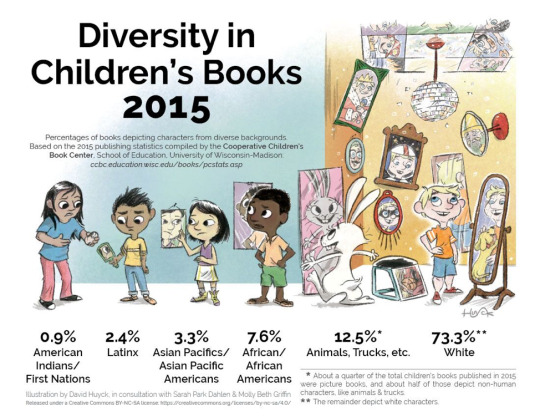
Illustration: Diversity in Children's Books 2015 by David Huyck, in consultation with Sarah Park Dahlen and Molly Beth Griffin
Social Justice Books serves to identify, vet, and promote multicultural and social justice children’s books, building on the tradition of the Council on Interracial Books for Children which offered a social justice lens to reviews of children’s literature. They also help parents and children develop critical literacy skills and promote activism around diverse representation in libraries. One example is their #StepUpScholastic campaign urging Scholastic to “publish and distribute children’s books that reflect and affirm the identity, history, and lives of ALL children in our schools.” Engaging children in proactive efforts to both notice and address the underrepresentation of people of color in literature, as illustrated above, builds their social justice literacy.
Books that Promote Justice and Peace
For those looking for books that promote justice and peace, resources like Social Justice Books offer vetted booklists on a variety of topics, as do Raising Luminaries: Books for Littles and Little Feminist: Books for raising conscious kids. Topics include:
Learning about family structures
Talking to kids about violence
Books for tomorrow’s leaders
Honoring single mothers
Promoting healthy fatherhood
Fostering social and emotional health, compassion, and independence
Helping kids recognize privilege
Cultivating healthy sexual boundaries
Preventing sexual violence
Bullying, civil disobedience, and disrupting injustice
Seek out books by authors of color like Newbery Medal and Coretta Scott King Honor receipient Kwame Alexander. Additionally, several anti-violence organizations offer book lists specific to addressing trauma. For example, The Child Witness to Violence Project offers books about trauma and violence for young children.
As M is for Movement explains, “Children’s literature—both fiction and nonfiction—is full of inspiration and examples of children and adults who stand up for themselves and others. Whether it’s ducks organizing animals to oppose unfair farm rules, a student listening to her classmates’ concerns when running for student council, or a boy joining his first march, young people’s literature can demonstrate how individuals and communities have the power to act as agents for social change.”
Through children’s books, we can teach justice and peace across generations. By engaging a child in a book with a strong message that fills the heart and the head, we can help build their understanding, compassion, and confidence to impact social change in ways that are meaningful and important to them. And these lessons and values will likely stick with them their whole life long
Images:
The Rabbit Listened by Cori Doerrfeld
Counting on Community by Innosanto Nagara
Illustration: Diversity in Children's Books 2015 by David Huyck, in consultation with Sarah Park Dahlen and Molly Beth Griffin
2 notes
·
View notes
Text
Fandom & Fan Activism
Today, to most Internet-users, social networking sites are important tools for them but not all would consider themselves as members of online communities where interactions and connections between members occur almost exclusively online. Media fandoms have become prominent examples of online communities today. Fandoms can be briefly described as community of fans that share interests in books, movies, TV shows, bands, sports teams, celebrities and other types of media.

Fandoms have become a perceptible and prominent subculture where fans depend on social networking sites and fan forums to make connections by finding other fans online thus building networks of engagement. Communications online and its immediacy nature and global access provides fandoms the platform to quickly grow their networks and developing relationships with other fans around the world has never been easier!

However, fandom is not restricted to only online technologies despite it being the main platform of interaction. There are many examples of face-to-face events and activities such as comic conventions or normally referred to as “Comic con”.Comic con draws thousands and thousands of fans to meet and fandom-specific clubs have grown to be more common. One thing that I find interesting about fandoms is that since most of the interactions between fans occurs online, they transcend cultural, linguistic and international borders.
According to Jenkins(1992),the fandom experience is “a community not defined in traditional terms of race, religion, gender, politics, or profession, but rather a community of consumers defined through their common relationship with shared text”

What is Fan Activism?
Fan activism can be defined as a form of civil engagement and political participation which emerges from fandoms and fan cultures’ passion.It can also be defined as efforts that are fan-driven to engage and address social,civic and political issues and these efforts are powerful modes of mobilization in supporting campaigns for human rights or social justice. Fan activism models numerous effective approaches of using social media to mobilize supporters and creating awareness and these approaches are also being adopted now by activist organizations and traditional charities in order to adapt to a networked society.

According to Bennett(2008),new forms of political and civic engagement are formed by younger generations which are tied to social networks and their personal interests.In this point of view,this participatory and popular culture unites people and mobilizes them to socialize.
Andrew Slack who is an activist, established the Harry Potter Alliance(HPA) in 2005 and this was inspired by Dumbledore’s Army, a student activist organization in the Harry Potter world and HPA is an example of a fan activist organization.The organization uses parallels between the real and fictional world as a boost for civic action and has mobilized young people who are mostly but not exclusively, Potterheads (this is what we call Harry Potter fans) to work for different causes such as human rights,equality and literacy.

As you all know, Harry Potter is widely read and known and is loved not only by hard-core fans but also by those who are “not part of the fandom” making it a useful resource of bringing core concepts from the fictional and the real world together.
The HPA has organized numerous campaigns to raise money in order to achieve both civic and political goals. Jenkins’s definition of fan activism is clearly met by the organization as it uses the story world and is built heavily on the preexisting community of the Harry Potter fandom as a catalyst for social action.The shared perspectives and experiences of Potterheads are mobilized by the organization by connecting stories from Harry Potter to real issues.

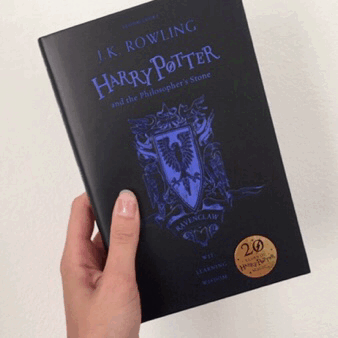

Another example is the Invisible Children(IC) which is described as a movement that was built around a documentary.It focuses particularly on the hardships faced by child soldiers recruited into the Lord’s Resistance Army and efforts to increase public awareness of the human rights violations and genocide conducted by a warlord in Uganda. The documentary was a success and in response to that, the filmmakers established IC to inspire young people to use the power of the media to help end Africa’s longest running war. Recently, the campaigns are focused on raising awareness regarding the war in Uganda. It has also urged the US government to pass the Northern Uganda Recovery Act and the Lord’s Resistance Army Disarmament and in May 2010, this was successfully achieved.Now, the Invisible Children puts focus on Uganda’s long-term development and creating infrastructure in the Congo.

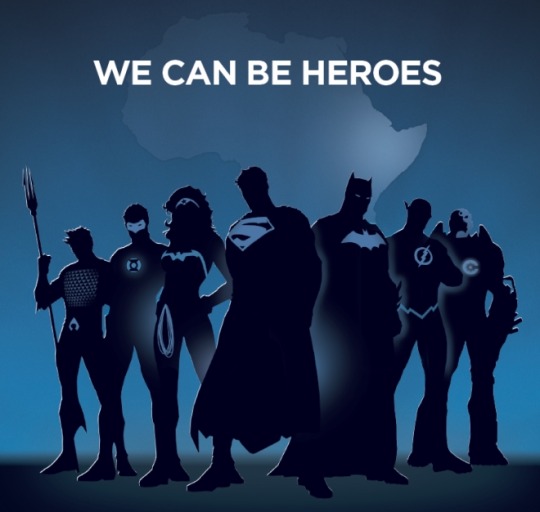
Unlike the HPA, IC requires us to have a greater understanding regarding fan activism. HPA was built on existing fan community and popular culture while IC was created by activists’ goals and has almost inadvertently built a fanlike public around a self-produced documentary. Despite that, the organization itself acknowledges that the members of IC resemble fans in many ways such as having an avid knowledge of its narratives and sharing enthusiasm for the media. The members also share a wide range of practices of collectively consuming and producing around IC media products. These two organizations provide us with different representations of the interrelations of fandom and activism.
“Isolated passive consumers” are what media fans have been stereotypically labelled as but I personally think that their consumption is rarely ever isolated or passive and many fandoms these days have become household names and has brought huge impact to people around the globe such as the Potterheads.They are more than just passive consumers because fans seek out content and integrate the cultural capital that they love into their daily activities and conversations.
The Internet, media and social networking sites have become a huge part of our lives and it is unavoidable that social action would intertwine with them. If one of the primary purposes of the Internet has been the production and sharing of media, then it is an ideal setting for the formation of online communities based on media experiences.
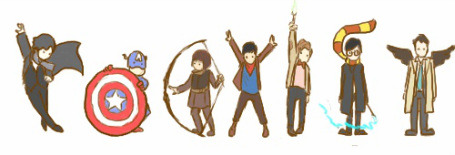
Some fans resists the efforts of bringing politics into their fandom and that their fan activities are merely seen as a way to release pressures of everyday life or preferring the term “charity” over the more political term “activism” as a way to describe their pro-social efforts. However, fandoms are valuable and unique in their own ways.
Before I end my post, I would like to ask an important question
Which fandom(s) do you belong to?

1 note
·
View note
Text
Post-truth
“Truth” is of no small importance to human affairs, yet it has been and remains a contested category. Its status shifts radically through time, place, religion, discipline —and today, social platform. Truth can be definite and mercurial, divine and political. As secularism, cosmopolitanism and positivism enter a moment of crisis, and as information seems to be ever more available – while also subject to algorithmic modification – anxieties about the status of truth and the transparency of information are on the rise.
“Post-truth” was the 2016 Oxford English Dictionary word of the year, denoting “circumstances in which objective facts are less influential in shaping public opinion than appeals to emotion and personal belief. ”The crisis in objectivity that this new word unveils has been accompanied by an unprecedented proliferation of homemade images that excel the art of “remixology”,the “practice of recombining preexistent content”.These images result in often-fake contents that circulate both virally and ephemerally online. The “post-truth phenomenon”, however, is not only fuelled by low-tech and intimate creativity, but also by technologically sophisticated and politically driven techniques of image creation, alteration, and destruction. These sustain electoral agendas, responses to catastrophe, and affective relationships to power holders.”
(Reality Machines:An Art Exhibitionon Post-TruthMara Polgovsky Ezcurra)
“A range of artistic acts and interventions meant to challenge the way the truth is presented in different socio-political and economic contexts.
Works that reflect an approach that seeks to act subversively outside the artistic context. Theorist Carrie Lambert-Beatty calls this artistic genre "Parafiction" – a term that denotes the use of techniques of deception and fraud, fabricated identities, impersonation, or production of fictional narratives and events. The works are acts of political imagination with actual consequences in the real world. They are experienced as fact and, under specific circumstances, are granted the status of truth. Thereby the issue of truth gains great importance.
This artistic genre was developed in Eastern European collectives in the 1970s and 1980s. In these countries, ideology was inseparable from historiography – in the way in which the past is narrated in order to generate revolutions and the constitution of ideas and prophecies. The histories and narratives that inspired those regimes are still in place, refusing to vanish and appearing as a psychological and social force.
Artists influenced by the aesthetics of documentary and mockumentary films and reality shows, aiming to offer a new reading of existing narratives.
They seek to reveal unknown historical aspects and open up the possibility of multiple narratives with respect to history.
Unlike other works, which play along the boundary between reality and illusion yet remain in the realm of fictional creations, some of these works tend to diminish the position to the illusory dimension. Prominent among them, yet changing according to context, is the intervention with real historical and cultural aspects.
The artist is able to take part in the dominant political, social, or economic discourse, to appropriate and to consume, yet at the same time to criticize.”
FCNN
FCNN News makes visible what has been made invisible
https://fcnnnews.love/episodes/episode-1-of-fcnnnews-white-institutions-and-representation/


FCNNNews is a news-platform and curatorial project initiated by Feminist Collective With No Name in 2018.
The platform is born out of the adverse misrepresentation of BiPoC’s and Queers in the art industry and mainstream media – everything from “de-ghettoising” areas in urban spaces to traumatic defeat and most importantly to public and institutional racism.
In each episode we have invited artists and organizations who work in the intersection of art and activism, to contribute to the program. Our first episode focuses on white institutions and representation; the following episodes explores the politics of gentrification, resistance and organization.
About FCNN:
Feminist Collective with no name (FCNN) was founded in 2016 by artists Dina El Kaisy Friemuth, Lil B. Wachmann and filmmaker Anita Beikpour.
Their work is rooted in activism and spans over performance, video, text and workshops often in collaboration with other collectives, individuals and institutions across border, nations and disciplines. Together with Space27 in Beirut, FCNN has been hosting the film and research project: Another Dinner, Ruined since 2018.
FCNN’s latest work is their ongoing news programme: FCNNNews.
The collective was initiated in Copenhagen, Denmark and works today between Berlin, NYC, Beirut and Copenhagen.
Dr. Pinkas The Iranian Ambassador in Jerusalem, 2015.

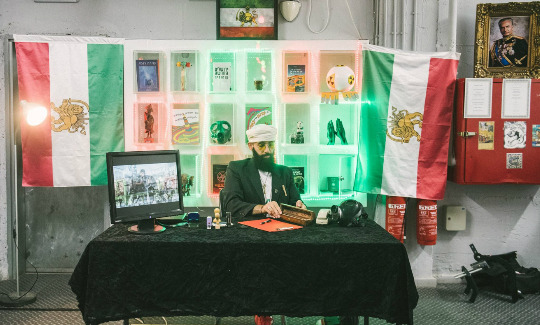
A group of Jerusalem artists ( collective Hamabul) opened the city’s first unofficial Iranian ‘embassy of culture’.
Relations between Iran and Israel have been tense since the Iranian Revolution, when Iran closed the Israeli trade mission in Tehran, which had operated as a de facto embassy, and Ayatollah Ruhollah Khomeini dubbed Israel “an enemy of Islam”. Iran does not recognise Israel. As president from 2005 to 2103, Mahmoud Ahmadinejad spoke of the Israeli state being “removed from the page of history”. Israeli politicians like Binyamin Netanyahu, the prime minister, have argued the Iranian regime poses a threat to Israel’s existence.
But Israeli and Iranian citizens have often spoken out of a desire for better ties. In 2012 Israeli peace activists launched a social media campaign to foster goodwill by showering Iran with ‘Israel loves Iran’ messages.
Pinkas Matan, the mastermind behind the cultural embassy who displayed red and green nail polish symbolising the Iranian flag, doesn’t believe politics should hinder good relations between citizens. Speaking in front of a projector screen playing a documentary about Iranian fashion, Matan announced the goal of the project as sparking communication between peoples, sharing culture and art, and promoting peace.
youtube
Paolo Cirio, Daily Paywall, 2014
- Newsprints and plastic newsrack, dimensions variable.



This artwork appropriated over sixty-thousand news items from the Wall Street Journal, Financial Times, and The Economist. In Daily Paywall, Cirio redistributed thousands of pay-per-view articles for free by hacking the paywall systems of the three major financial newspapers and proposed a new economic model for circulating news articles. Readers could earn one dollar for responding correctly to quizzes about the featured articles, journalists were invited to claim compensation for their writing, while donors could offer any amount to crowdfund the model. DailyPaywall.com has over 60,000 articles in total; Cirio selected fifteen topics, each featuring eight articles published in 1,000 print copies which were distributed as a free paper available in custom newsracks and bookshops throughout New York City. Eventually, the site was shut down when the publisher Pearson PLC made claims on its own copyrighted material. A year after the legal threat, Pearson sold both The Financial Times and The Economist. As a result, Cirio republished DailyPaywall.com in its entirety. In Daily Paywall, Cirio’s radical action and participatory model elicited reflection on access to knowledge and the contemporary information economy. The work was staged by utilizing the distribution of information as a material to make works of art and to interrogate legal, linguistic, and socioeconomic structures. In the installation, elements of the performance are assembled to document and recall its propositions. Printed copies of the Daily Paywall newspaper are available to the audience, while the flowchart print of the economic model stands as the core concept of the artist’s intervention.
youtube
youtube
Joana Moll, AZ: Move and get shot. 2012 - 2014.


AZ: Move and Get Shot is a net-based piece which shows the landscape of the US-Mexico border in the state of Arizona through the eyes of six surveillance cameras, themselves linked to an online platform. The platform was created by a group of landowners with properties on the US border, whose main purpose was to provide the public with raw images of immigrants crossing the border illegally through their lands. Each camera incorporates a motion sensor, which triggers an image capture when it detects the slightest vibration in the landscape. These pictures were then sent to a server and displayed directly on the web page.While the main goal of the landowners was to disseminate photographs of illegal immigrants, the camera is programmed to detect and record any kind of movement. By delegating the surveillance to a machine, the original human intention is lost, and the original purpose takes shape as a collection of images revealing not only immigrants but all kinds of human, animal, and natural activity.



"they both point towards a possible militarization of civil society through the use of web-based cameras to watch immigrants crossing the border. When combined with interactive media, virtual surveillance becomes a tool to decontextualize the border and crowdsource the police actions to civilians, and, by extension, turn the users into disengaged border officers ...
While the main goal of the landowners is to capture and disseminate photographs of immigrants entering the United States illegally, the camera is programmed to detect and record any movement. By delegating surveillance to a machine, human intention is lost, and the original purpose is transformed, resulting in an accelerated collection of images, which reveal not only immigrants, but all kinds of human, animal and natural activity. Therefore, I conceived AZ: move and get shot with the intention to reveal how this action of monitoring the border becomes something uncontrollable and potentially meaningless.“
Carmen Dobre-Hametner, Consuming History, 2015.
Consuming History, is a photographic series presented in the group exhibition Inventing the Truth. On Fiction and Reality, representing Romania at the 2015 Venice Biennale. The project documents a participative show which takes place in a former Soviet bunker near Vilnius, Lithuania where a team of actors, employed by a commercial entity, stage traumatic living during communism for locals and foreign tourists alike. The visitors are guided through the following experiences: a propaganda session, KGB interrogation, rudimentary medical examination, fingerprinting, military instruction, shopping in a communist store and having a typical communist meal. The show is not scripted and aims at maintaining a balance between the aggression which is applied to the participants and moments of relieving the tension, thus avoiding its transformation into another Stanford experiment. Rather than reviving the actual horrors of the Soviet past, the Survival Drama (the name of the show) fictionalizes history to the effect of exemplifying a touristic relationship to the past and the transformation thereof in a product ready of consumption.



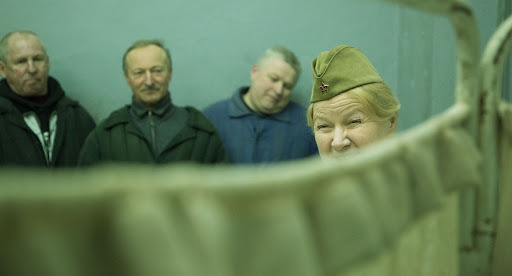

Amalia Ulman, Excellences and Perfections. 2014.

On April 19, 2014, Amalia Ulman uploaded an image to her Instagram account of the words "Part I" in black serifed lettering on a white background. The caption read, cryptically, "Excellences & Perfections." It received twenty-eight likes.
For the next several months, she conducted a scripted online performance via her Instagram and Facebook profiles. As part of this project, titled Excellences & Perfections, Ulman underwent an extreme, semi-fictionalized makeover.
She pretended to have a breast augmentation, posting images of herself in a hospital gown and with a bandaged chest, using a padded bra and Photoshop to manipulate her image. Other elements of the makeover were not feigned; she followed the Zao Dha Diet strictly, for example, and went to pole-dancing lessons often.


Through judicious use of sets, props, and locations, Excellences & Perfections evoked a consumerist fantasy lifestyle. Ulman's Instagram account is a parade of carefully arranged flowers and expensive lingerie and highly groomed interiors and perfectly plated brunches. These images are excessive, but also believable—because they're so familiar. For many privileged users, social media is a way of selling one's lifestyle, of building one's brand. And Ulman went to great lengths to replicate the narrative conventions of these privileged feeds, from her use of captions and hashtags (#simple, #cutegasm), to the pace and timing of uploads, to the discerning inclusion of "authentic" intimate or emotional content (a photo of a lover or a moment of despair).
Critic Brian Droitcour has described the rise of social media as a rebalancing of image-making power: the "aestheticization of everyday life in social media…has leeched the authority of image-making from mass media and from art." In an important shift, social media has given far more people than ever before the means to self-publish.


Ulman conceived of Excellences & Perfections as a "boycott" of her own online persona. For three months, she allowed her profiles to be exactly what social media seems to demand—that she be a "Hot Babe." As a result, she garnered the support of other women who had endured similar makeovers or procedures. She earned criticism for seeming to promote retrograde physical ideals, she was the target of cheap flattery, vulgar propositions, and abusive comments. Her close friends were often confused, unable to demarcate the Ulman of social media as a separate fiction, even when she would try to explain the project away from the keyboard. By repeating a lie for three months, she created a truth that she was unable to dismantle.

NO HUMANS INVOLVED: AN OPEN LETTER TO MY COLLEAGUES by HOWDOYOUSAYYAMINAFRICAN?
http://thewayblackmachine.com/
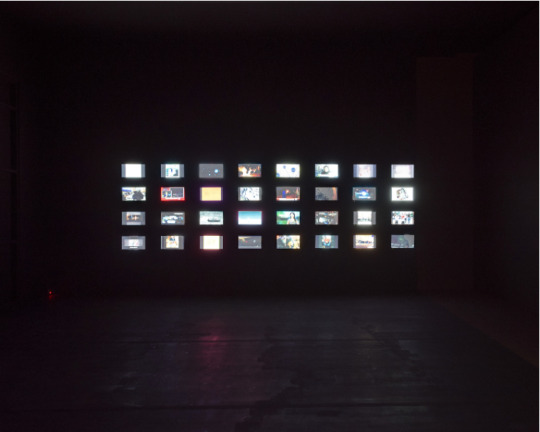
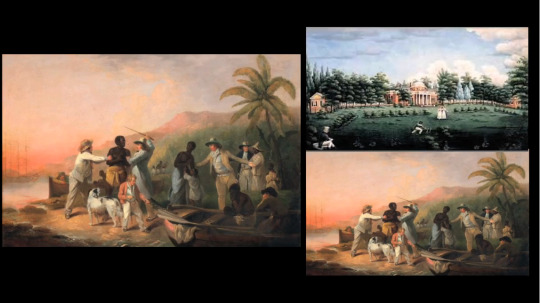
"The varied projects of transdisciplinary collective HOWDOYOUSAYYAMINAFRICAN? are designed to function as laboratories for the investigation and production of discourse.
HOWDOYOUSAYYAMINAFRICAN?, a multi-disciplinary arts collective made up of 45 artists who have lived and worked together, in various iterations, for the past twenty years. The collective consists of visual artists, writers, poets, composers, academics, filmmakers and performers from around the world who collaborate across disciplines and cities. Projects conceived and created by this transnational collective ultimately function as laboratories for investigation, production and discourse.
This Web Experience is
Curated
by Richie Adomako, Christa Bell and Sienna Shields
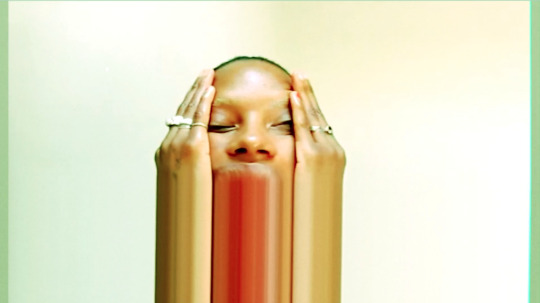
Forum N.H.I.: Knowledge for the 21st Century. vol. 1, no. 1, Fall 1994.
You may have heard a radio news report which aired briefly during the days after the jury’s acquittal of the policemen in the Rodney King beating case. The report stated that public officials of the judicial system of Los Angeles routinely used the acronym N.H.I. to refer to any case involving a breach of the rights of young Black males who belong to the jobless category of the inner city ghettoes. N.H.I. means “no humans involved.”
Stephen Jay Gould argues that “systems of classification direct our thinking and order our behaviors.” [Gould, 1983] By classifying this category as N.H.I. these public officials would have given the police of Los Angeles the green light to deal with its members in any way they pleased. You may remember too that in the earlier case of the numerous deaths of young Black males caused by a specific chokehold used by Los Angeles police officers to arrest young Black males, the police chief Darryl Gates explained away these judicial murders by arguing that Black males had something abnormal with their windpipes. That they had to be classified and thereby treated differently from all other North Americans, except to a secondary degree, the darker-skinned Latinos. For in this classificatory schema too all “minorities” are equal except one category that of the peoples of African and of Afro-mixed descent who, as Andrew Hacker points out in his recent book, are the least equal of all.
“Certainly,” Hacker writes, in Two Nations: Black and White, Separate, Hostile, Unequal (1992) “all persons deemed to be other than white, can detail how they have suffered discrimination at the hands of white America. Any allusions to racist attitudes and actions will find Cherokees and Chinese and Cubans agreeing with great vigor ... yet ...members of all these intermediate groups have been allowed to put a visible distance between themselves and Black Americans.”

0 notes
Photo
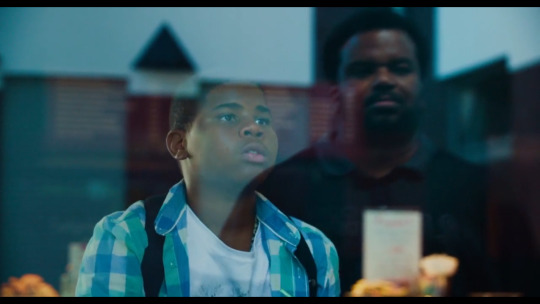
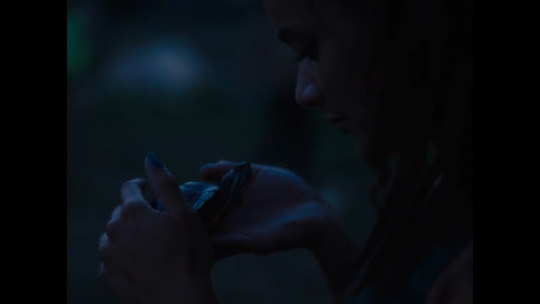
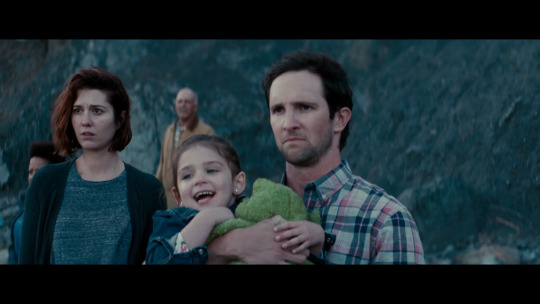
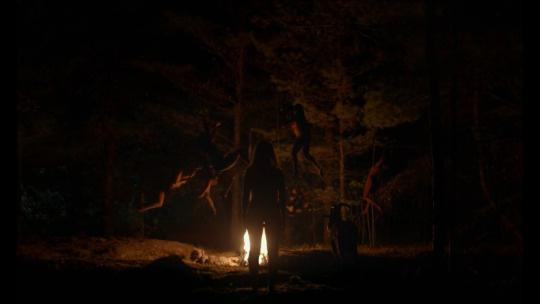
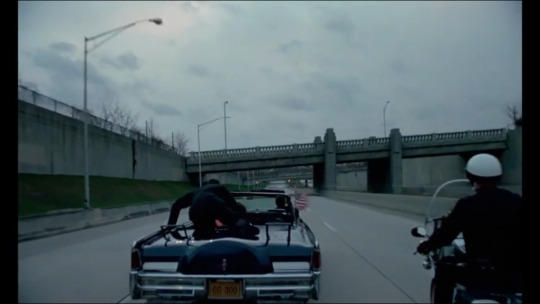

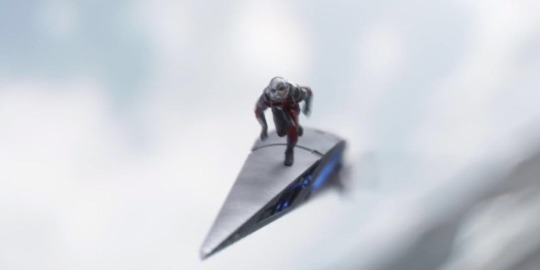



Top 10 Memorable Scenes Of 2016
Along with great films comes sometimes ever greater scenes. This year I broke down 10 of my favorite. These are all my personal favorite and are on this list because I haven’t stopped thinking about them since I saw them in the dark room with the giant shining light where I do my worship. These scenes are Heaven and film is God.
10. Morris From America (Car Ride) Of all the films I saw this year, Morris From America was one of the best surprises. Chad Hartigan’s coming of age tale about a young American boy growing up in Germany with his single father played brilliantly by Craig Robinson is the perfect examination of the loneliness of growing up and being grown up. In a key scene from the film Morris, played by Markees Christmas, has gone out of town with some new friends and gets stranded when he no longer wants to follow the group and starts getting taunted. His father has to come pick him up and the car ride in which Robinsons character explains to Morris all about his own loneliness and sense of sadness with being out of place in Germany is a beautiful revelation for both characters. It’s one of the best things Craig Robinson has done. The sadness and loneliness that we all feel but never can convey is brought out wonderfully in this conversation. As children we assume our parents could never understand our loneliness and as parents we aren’t sure how to connect with our kids but this scene shows that conversations can move mountains and break down barriers.
9. American Honey ( Star Grows Up) American Honey is like if Andrea Arnold was able to capture the wild excitement and the unstable emotional state of the youth of America. Throughout the film you follow Star, played by newcomer Sasha Lane, who is a young Midwestern girl who isn’t exactly living the best life. She and her younger siblings dig through trash cans for food while she also deals with sexual advances from her absent mothers boyfriend. It’s a situation you want her to get out of but what way out is there? Star comes across a van of misfits and lowlifes lead by king rat tail, Shia LaBeouf as Jake in an unusually good performance, who go door to door selling magazines. Star joins this merry band of arm pit stains and sets off on a literal journey to self discovery. The final scene displays the group dancing around a camp fire like some tribe of young stoners who worship Rihanna and it’s a mesmerizing site. Jake and Star and the rest of the group dance around the fire and sing songs as if it’s their most natural state. Jake pulls Star to the side and hands her a little turtle. Throughout the film Jake has been giving Star gifts but it’s mostly to disguise the fact that he’s really taking more away from her. The mind games he plays with himself and her are leaving Star emotionally confused and scarred. She takes the turtle and sets it back in the lake and even taking a dip in it herself. The scene plays like a baptism of sorts, allowing Star to let go of the childish games and relationships and start to become herself, whatever that may be.The scene doesn’t guarantee that Stars life gets better or that she even learned what she needed to from her interactions with Jake and the rest of the crew but it shows one persons internal growth in a masterful way.
8. Swiss Army Man (One Last Fart)
Throughout Dan Kwan and Daniel Scheinert’s brilliant Swiss Army Man you are subjected to Daniel Radcliffe as a farting corpse named Manny and Paul Dano as the miserable loser Hank who finds his body washed up on the shore of a random island he choose to kill him self on. After Hank uses Manny as a speed boat he ends up in the wilderness with the need to survive and the only way he can is with the help of Manny and his many uses. He can chop wood and shot bullets out of his mouth and everything else like some ummm… Multi Purpose Dude?…. NO! Like a Swiss Army Man! Throughout the film Hank displays an unhealthy obsession with a female character named Sarah, played by Mary Elizabeth Winstead, we only see in flashbacks or pictures. You come to find out that, even though he has a picture of her as his screen saver, Hank has actually never talked to her and has been too scared and shy to really function as a socially expectable human being. When we get to the end and Hank ends up in Sarah’s backyard and finally on a beach where he’s already been outed as an obsessive stalker he lets out a fart and declares very proudly it was him who farted and in a lesser film Sarah’s reaction would be one of Joy and maybe she would have even entertained dating him seeing that as his self discovery but not in this film. Sarah and her husband a long with the rest of the crowd gathered on the beach watch in horror and never excuse the behavior. It throws the whole idea of all you have to do is be yourself and you’ll get the girl right out the fucking window. Sarah and the audience know Hank has a problem and regardless of how whimsical and cute it is, it’s a problem and he needs help and she or any woman of your dreams for that matter isn’t the answer and shouldn’t be forced to be your savior. Hank is off but he’s growing and watching Manny smile and fart his way up the ocean waves as everyone watches in disgust and horror and Hank,who stares and smiles knowing he saved a life,was one of the funniest and heartbreaking moments I’ve seen all year.
7. The VVitch ( Unholy bond with Black Phillip)
Robert Eggers delivered one of the best horror films to come out in a long time. A slow burn of a film that deals with a family living out in the woods in 1630s New England. The family is cast out of their community and forced to live out in the woods where an evil presence lurks. The Witch is about liberation. It’s about freeing yourself from the shackles of society with all their religion and rules for how one should act. It is especially a tale of liberation concerning Anya Taylor-Joy’s character Thomasin. She’s carried down by the weight of her responsibilities within her family. A role she didn’t ask for but is expected of her since she is a growing young woman. She must watch after the kids and clean the house and cook and do all the things her families religion and society has assigned to her. Throughout the film an evil lurks in the woods in the form of a witch. You know you’re in for some fucked up shit when the film starts with a naked lady cutting open a baby and bathing in its blood. You don’t see all the gory details but you get the feeling that living out in the woods in New England during the 1630s was a pretty stupid idea. The scene I want to talk about is the ending of the film. An ending that pretty much will make or break what you thought of the film up to that point. The ending in which Thomasin pledges an alliance with Black Phillip, the goat who Thomasins younger siblings claim to be the Devil earlier in the film and Thomasin brushes it off, and follows him into the woods to find a camp fire of witches laughing and screaming until all at once they start to lift towards the sky in what is one of the best visual representations of liberation I’ve seen. Now, I’m not saying this movie got me to denounce God and start worshipping the Devil but it did.
6. Jackie ( Assassination Scene )
Pablo Larrain has knocked the biopic on its head with this amazing psychological horror film and Natalie Portman gives the performance of her career playing Jacqueline Kennedy in her most vulnerable and fragile moments. The key scene in question is the sun in which this film revolves around. The assassination scene could have been done in a very exploitive and classless way in the hands of a lesser film maker. The fact that we can actually see footage of the event only adds to pressure surrounding the scene. We all pretty much have watched the film footage. It’s morbid and violent and chaotic and it satisfies the worst of our voyeuristic tendencies. This could have been done in a way that glorifies the scene as some action set piece head shot but Larrain films the scene with a real heavy grace, dropping you in the car with a loud BANG! we are chaos and panic and we’ve landed right on Jackie and you feel as she pushes and struggles with us as we tear through the scene like a bullet creating uncertainty and dread. Every awkward movement and confused look is captured perfectly in this scene and it’s like we are seeing it for the first time and really feeling the weight of it.
5. La La Land ( Traffic Jam )
The opening scene of Damien Chazelle’s spectacular film La La Land is pretty much the opening scene to your life if you live in LA. Being stuck in traffic is hell but almost everyone of those people, honking and shouting, are here because they have a dream and trying to successfully realize that dream can make life one huge traffic jam. This glorious musical sequence is made all the more spectacular by being done in what is made to look like one unbroken long take that slips and glides up down the 105 as morning commuters dance and sing as if though Los Angeles is the casting director for Hollywoods latest big budget musical. They don’t make them like this anymore and Chazelle makes the case that as long as you know what you’re doing and you have a passion for film musicals can still be relevant and fresh but still remind us of the optimism and joy of early Hollywood. The scene encompasses everything about the film. Ambition, talent, and guts. You gotta have them to make it in La La Land and you gotta have them to think you can open a film like La La Land with a musical number as ambitious as this.
4. Captain America : Civil War ( Airport Scene )
The Russo Brothers snuck into my brain and unlocked my comic book geek dreams and wildest fantasies and used that collective knowledge to create not only one of the greatest superhero films of all time but one of the all time greatest superhero film scenes ever put on screen. I can write pages and pages about this scene and every little detail that was done correctly and with such care that it made me cry but I am just going to remind you that Spider Man is the best he’s ever been on screen in his brief moments in this film. Ant- Man and Paul Rudd as Ant Man is the superhero we didn’t know we needed. HE FUCKING TURNS INTO GIANT MAN! Just go watch the scene. As a matter of fact I’m going to stop typing and you should stop reading and just GO WATCH CIVIL WAR NOW!
3. Moonlight ( End of act 1/ Closing Shot )
What can I say about Moonlight that hasn’t already been said? It’s considered one of the best films of the year and for a very good reason. This beautiful film about self discovery and connection in a world that doesn’t give you a chance to do either of those things for yourself is a master class in subtle filmmaking. Barry Jenkins creates a giant effect with small intimate moments and although he is the cook it is his main ingredients that really bring this dish together. All the actors playing the 3 stages of Chiron’s life are pitch perfect and are supported by an array of brilliant performances. One of those performances belongs to Mahershala Ali, who plays Juan the drug dealer, and gives one of the best performances of the year. The scene in question puts us at Juans home where he lives with his girlfriend, played by Janelle Monae, and it’s the end of act one. We’ve just experienced Juan coming across a young Chiron ,who was being bullied and chased by older kids, and eventually forming a bond. This bond allows young Chiron to not have to go home to his crack addict mother, played by a fantastic Naomie Harris, and use Juans place as a safe haven from her addiction and verbal abuse but what Chiron doesn’t know is that Juan is where his mother gets the drugs that are sending her and his life spinning out of control. In an emotional gut punch of a scene young Chiron walks up to Juan who is sitting at his kitchen table and asks him if he is the one who sells drugs to his mother. What follows is one of the most heartbreaking exchanges I’ve ever seen on film and Mahershala Ali as Juan quietly figuring out in his head what to tell Chiron and eventually telling him the truth is an automatic Oscar in my opinion. Juan’s reluctance to tell Chiron and his eventual feelings of disappointment and anger towards himself are all shown in Ali’s eyes and body language. He never goes for the big scene and makes it larger than life because of it.
2. The Lobster ( David picks up on the Heartless woman while biscuit woman dies on the floor next to them )
In Yorgos Lanthimo’s brilliant relationship satire we follow David, played by Colin Farrell, as he is forced to live in a hotel for 45 days because he is single and being single is outlawed and in order to avoid being turned into an animal after 45 days he must find a partner and create a relationship with them in the hotel. Sounds like every other fucking day, am I right? In this brilliant comedy our characters find love with each other by finding certain traits that each can relate to. For example, a young woman has constant nose bleeds and instead of trying to win her over with a personality, another character decides to bang his head or stab a sharp object into his nose in order to give the impression that he also has constant nose bleeds and wins her over. It’s the perfect metaphor for the way people court each other and try to win each other over with surface and artificial things like being into the same bands or having the same fashion sense. In this key scene David decides he needs to find a partner soon and that he will also need to fake something in order to find her. David finds himself being attracted to The Heartless Woman, played by Angeliki Papoulia who was also in the directors previous film Dogtooth, who is given that nickname because she is mean and has no heart. The scene that really brought this film together and makes it stand out above the rest is a scene where one of the hotel guests has just jumped out of a window in an attempt to kill herself. She lays on the floor all crippled and screaming in pain when David sees this as an opportunity to try and court the heartless woman, he walks up behind her as she sits in a hot tub not very far from the attempted suicide and say’s out loud how he hopes that the lady will die soon so that she stops screaming because it’s really disturbing his day and with that heartless statement he gets a glance from the heartless woman and from there they are a couple. It’s doomed from the start and he knows it but with the pressure on us everyday to find a partner we are willing to go against ourselves to please others and even willing to complain about a dying woman’s screams. It’s hilarious and heartbreaking and dark in ways that give me joy beyond comprehension.
1. Green Room ( Patrick Stewart vs. Anton Yelchin )
Jeremy Saulnier’s punk rock horror film Green Room stands above the rest this year when it comes to thrills and twists you never see coming. It’s a master class in suspense and tension. This isn’t some free for all shoot ‘em up stab 'em frenzy, it’s a calculated cat and mouse game that requires our characters to think before acting. A punk rock band has just witnessed a murder in the green room of the venue they just played that just so happens to be run by a menacing skinhead gang. The bands bassist, played by the late and talented Anton Yelchin, was able to dial the cops on his cell phone before it’s grabbed from his hands and this creates a problem for both parties. Now that the band has seen what they saw the venue can’t exactly let them go but after having the cops called on the venue they can’t exactly just straight up murder these kids so they have to figure something out and they get their help in the form of their quiet but menacing leader Darcy, played by a brilliant Patrick Stewart, who figures out a way to get rid of the band and save face. At this point our band is locked up in the green room holding one of the skinheads hostage while they have his gun and figure out how the hell to get out of there. One punk suggests shooting his way out but this isn’t that movie and our characters know that they could have more guns on the other side and at this point the band believes the cops are on their way to the venue. Enter Darcy who shows up to clean the mess by promising that they will let the band go without harming them as long as they hand over the gun and the person they have in the room safely but the band as well as the audience knows that isn’t the case and it isn’t going to be that simple. What follows is one of the most tense stand offs in cinema history. It’s Anton Yelchin trying to figure out if he should unlock the door and hand over the gun to Patrick Stewart on the other side but it’s a back and forth that has both actors matching wit and verbally trying to knock the other out. It isn’t until the end of the scene that we get a burst of violence and chaos but leading up to that is a strategy game that leaves you at the edge of your seat and asking yourself “ What the fuck would I do in a situation like this?” and then showing you there is no right or wrong answer and you can’t always just go into action hero mode because the situation calls for it. For the most part you just die.
#green room#american honey#the lobster#la la land#the witch#morris from america#swiss army man#jackie#moonlight#captain america#civil war#best scenes of 2016#film#film blog#top 10 lists#film lists
1 note
·
View note